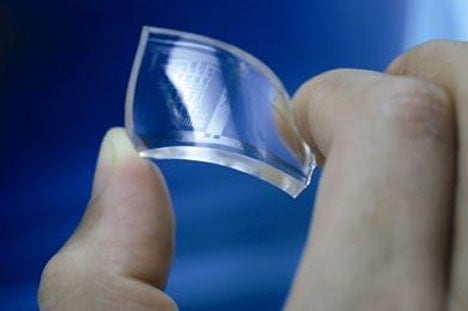Nokia embracing new 'miracle material' for future hardware development

The Graphene Flagship Consortium, a collection of industry and academic partners - including Nokia, was selected by the European Union for the Future and Emerging Technologies program, which will see an investment of 1 billion euros over the course of the next 10 years. We know what you're thinking, "Just what is Graphene?"
Graphene is classed as a 2D structure (composed of pure carbon) with super-useful properties, measuring in at only one atom thick. It's reportedly the strongest material ever tested, with a breaking strength of 300 times greater than steel. As well as that, graphene is the lightest and best intrinsic conductor too. The Graphene Flagship Consortium currently consists of 74 partners from within the EU.
Nokia is also getting its hands dirty with the new material, which is why this may be of interest for Windows Phone. Henry Tirri, EVP, CTO of Nokia explains why Nokia is interested in graphene:
"Nokia is proud to be involved with this project, and we have deep roots in the field – we first started working with graphene already in 2006. Since then, we have come to identify multiple areas where this material can be applied in modern computing environments. We’ve done some very promising work so far, but I believe the greatest innovations have yet to be discovered. Graphene happens to be an area where we, in Europe, have all the important players in the value chain who are ready to use it in applications. From that perspective, this is a very efficient and promising way of doing research investments for Europe."
Tapani Ryhänen, Head of the Sensor and Materials Technologies Laboratory at Nokia continues:
"During the last 18 months we have seen a tremendous effort to build collaboration between European academia and industry. Now we have all the ingredients in place to be globally successful. We believe that new two-dimensional materials will have an impact on industrial value chains in many ways, creating opportunities for new products, services and economic growth."
While graphene is in development and is actively being studied in the EU, Asia and the US are leading when it comes to patent publications - even though it was pioneered in Britain.

Graphene bending it like Beckham - image source
Tapani explains how the consortium is going about helping development:
All the latest news, reviews, and guides for Windows and Xbox diehards.
"Making products out of graphene will definitely happen across lots of different industries. By introducing people from different markets together within the EU-based consortium, we can begin to make real-world applications that benefit us all.Really, this type of technology has radically improved the properties of many materials that can be used in our industry. It was discovered in the EU, and we’re very proud to have been involved from the very early years and now to be participating in the consortium. We have a very functional research team in place that can do world-class research with our partners.We have kept our eyes open, and believe that this will bring immediate impact to our products over the coming years in some way or another."
Graphene could turn into something special for Nokia and Windows Phone with new hardware being released. It'll be interesting to see how the manufacturer can apply the new material to its production lines. Check out the video below for a quick look at the Graphene Flagship Consortium:
We're excited to see future developments of both graphene and Nokia plans to include it in Windows Phone smartphones. Interest has been high for a few years now, with the likes of Samsung creating a 25-inch flexible touchscreen using graphene. We're still a long way off, but the future's certainly bright for technology, especially if we see graphene replace silicon.
Source: Nokia

Rich Edmonds was formerly a Senior Editor of PC hardware at Windows Central, covering everything related to PC components and NAS. He's been involved in technology for more than a decade and knows a thing or two about the magic inside a PC chassis. You can follow him on Twitter at @RichEdmonds.
